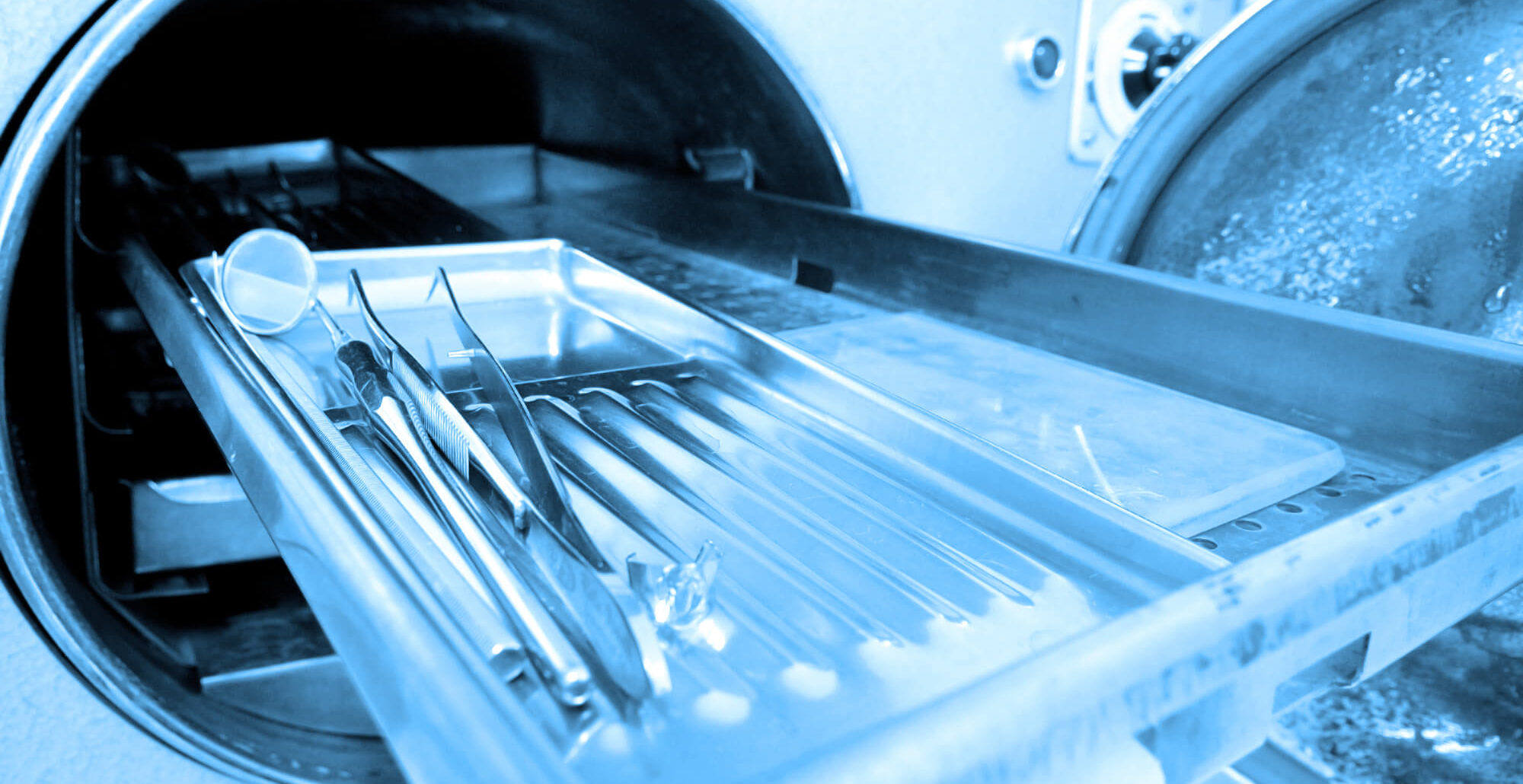
26 Oct Loading and Operating Tabletop Sterilizers in Dental Settings
Dental Assistants and dental hygienists are responsible for all aspects of patient care device reprocessing. This might include handling, rinsing, cleaning, drying, packaging, cooling, storing, and transporting potentially hazardous sharps and other healthcare devices. Cleaning dental instruments is an incredibly important step to patient care. Dental staff can quickly complete this task using a small tabletop steam sterilizer.
Tabletop sterilizers, also known as autoclaves, are devices that sterilize patient care items for future use. Patient care items fall into four categories, including:
- Critical: Items that penetrate soft tissue, contact bone, enter the vascular system, or engage with other sterile tissue. These items pose the highest risk of infection transmission and must be heat sterilized between each use.
- Semi-critical: These items come in contact with mucous membranes or non-intact skin. Although infection transmission risk is lower, they still require high-level disinfection or heat sterilization. Heat tolerant items require sterilization since this provides a higher level of protection to the patient.
- Non-critical: These items typically only come in contact with intact skin. Some examples include headrest covers, x-ray heads, and blood pressure cuffs. Clean non-critical items with a low or intermediate-level disinfectant.
- Disposable (Single-use): These items are intended for one-time use on a sole patient during a procedure. Do not reuse these items since the manufacturer does not provide reprocessing instructions. Instead, dispose of them in the appropriately labeled bins and sharps containers.
Many healthcare and dental clinics utilize an autoclave for high-heat sterilization to clean critical and semi-critical care items. Sterile processing technicians in dental colleges of medicine and dental staff in clinics or private practices must receive proper training to provide the safest products to patients.
Small Steam Sterilizers
There is an array of methods available for instrument sterilization in healthcare settings. Perhaps the most effective of all is steam sterilization. In its guidelines for disinfection and sterilization in healthcare settings, the U.S. Centers for Disease Control and Prevention (CDC) recommends using heated, saturated steam under pressure to remove infectious particles from patient care items. There are many models of small steam sterilizers, with dental professionals preferring tabletop product types. All healthcare facilities should ensure that their sterilization methods and devices are approved by the Food and Drug Administration (FDA).
Sterilization in Dental Settings
Tabletop autoclaves are a typical tool used in dental settings. The compact, portable devices are perfect for sterilizing reusable instruments and heat resistant plastics used in dental procedures in small to medium practice settings. According to the CDC, steam sterilization is the preferred method for decontamination in dental settings because it is:
- Inexpensive
- Non-toxic
- Uniform and thorough
- Rapidly microbicidal, meaning it kills bacteria quickly
- Rapidly sporicidal, so it eliminates spores and other infectious particles
- Able to penetrate fabrics easily
Unfortunately, like other sterilization processes, there are some downsides to utilizing small tabletop sterilizers in a dental setting. Steam can have a detrimental effect on particular materials, including corrosion and possible combustion of lubricants associated with dental handpieces. Steam sterilization can also result in increases in plaster-cast mold hardening time of nearly five times. Regardless of the few disadvantages of steam autoclaves, they’re still useful in accomplishing impressive sterilization levels.
Loading a Tabletop Sterilizer
Appropriately operating sterile processing equipment is essential in keeping dental patients safe during procedures. Autoclaves are impressive devices but can be dangerous if not used correctly. Dental staff responsible for reprocessing instruments and devices must have the knowledge to load sterile processing equipment in dental settings properly. When loading your autoclave with tools, take the following steps to ensure completion of the sterilization process is correct:
- If necessary, disassemble the items before wrapping and packaging them for sterilization. Place a chemical indicator (autoclave tape) visibly on the outside of wrapped cassettes. Place an internal chemical indicator inside wrapped packages and peel pouches (paper-plastic pouches). Label the package with the following information:
- Sterilizer number (if more than one sterilizer)
- Load or cycle numbers
- Date of sterilization
- Expiration date (if applicable)
- Initials of person wrapping the item
- For wrapped packages, label the item with the contents such as Prophy
- Load the sterilizer according to the sterilizer manufacturer’s instructions, leaving enough space around each item to permit steam penetration
- Ensure nothing touches the sides or top of the sterilizer and all items are entirely inside the sterilizer trays
- Peel pouches must not touch one another.
- Do not stack peel pouches.
- Sterilize packaged patient care items in an autoclave.
- Monitor each autoclave load throughout the process using chemical indicators inside every package and mechanical (printout) monitoring.
- Run biological indicators (spore tests) weekly at the minimum, although the best practice is running a biological indicator in each sterilizer daily.
- Wet instruments are a sign of a sterilization problem. Consult the owner’s manual for troubleshooting information.
- Store items in the appropriate containers in a dry environment. Sterilized instruments should be stored “under cover,” meaning in a closed cabinet or drawer.
Tabletop sterilization is an effective method for sterilizing critical and semi-critical patient care devices. Take care to ensure the process is completed correctly to avoid any infections or other serious issues next time a patient comes in contact with the item.
Conclusion
Correctly sterilizing patient care equipment is crucial to the health and wellbeing of dental patients. Dental staff should have adequate training to operate tabletop sterilizers properly. If you feel your instrument processing protocol may not be based on current evidence or your practice could be performing substandard sterilization, work with a professional infection preventionist to obtain an on-site assessment of your sterile processing methods. You should also seek out extensive educational and training courses. Evidence-based instrument reprocessing is the key to a safe facility. Guarantee your sterile processing team has the right tools and knowledge to load and operate tabletop sterilizers safely.
